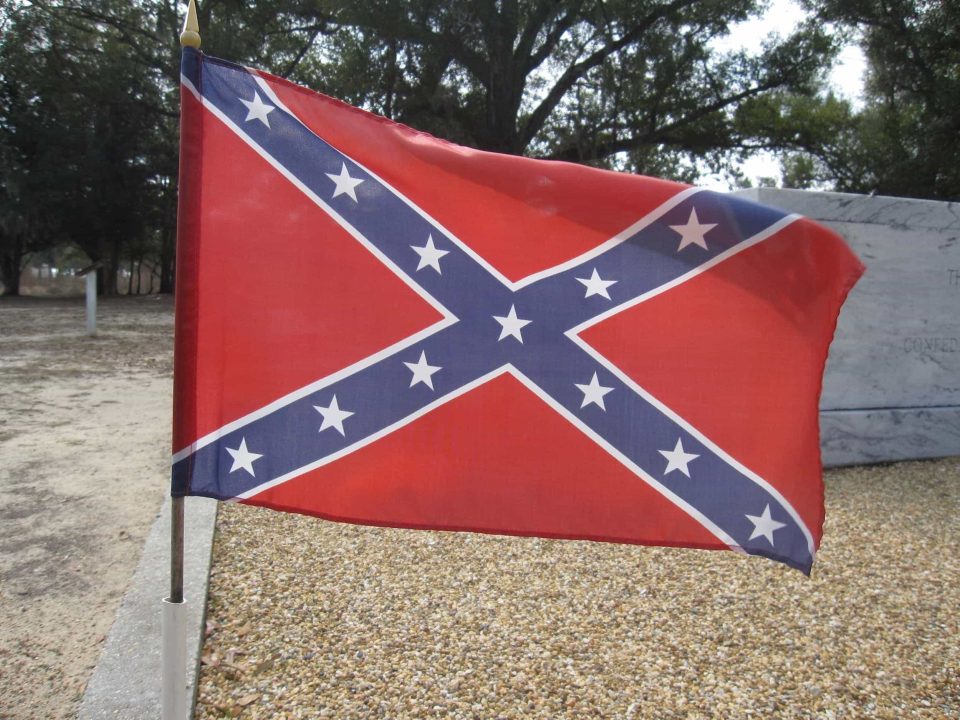COLUMBIA, S.C. (AP) — The shooting deaths of nine people at a black church in Charleston, South Carolina, have reignited calls for the Confederate flag flying on the grounds of the Statehouse in Columbia to come down. Rallies are being held, and politicians have joined the chorus of voices calling for its removal — an opinion that has carried political risks in the state in the past.
Here’s a look at the history of the flag’s presence in the state capital:
1938 — The Confederate flag is raised in the South Carolina House chambers.
1956 — The flag is raised in the Senate.
1962 — The Confederate flag is raised over the Statehouse to commemorate the Civil War centennial. The resolution calling for this doesn’t specify when the flag will come down.
1970s-1980s — Black lawmakers and others call for the flag’s removal.
1993 —State Attorney General Travis Medlock says there’s no legal reason to keep flying the flag.
1994 — Black ministers and National NAACP Chairman William Gibson of Greenville threaten a boycott. Columbia Mayor Bob Coble and business leaders sue to force the flag’s removal. Flag opponents march on Myrtle Beach and Hilton Head Island. Lawmakers fail to pass legislation to remove the flag from the dome and put two Confederate flags on the Statehouse grounds.
1995 — Legislators pass a law to protect the flag during Statehouse renovations and give lawmakers sole power to remove it. Coble drops his lawsuit.
1996 — Republican Gov. David Beasley proposes moving the flag to a Statehouse monument.
1997 — In January, religious leaders march in Columbia to protest the flag. Three days later, the House rejects Beasley’s plan but passes a flag bill that the Senate lets die. In March, Beasley concedes defeat on the issue.
1998 — In September, Beasley repeats his pledge to never again try to remove flag. Democratic challenger Jim Hodges also promises not to revive the issue. Hodges defeats Beasley, thanks in part to the influence of the Sons of Confederate Veterans. In October, the NAACP demonstrates at the Statehouse.
1999 — The flag issue resurfaces in June as black lawmakers find that legislative manual covers are printed with images showing the flag in the background. On July 15, the national NAACP passes a boycott resolution. Five days later, the Southern Christian Leadership Conference moves its annual 2000 convention from Charleston. Hodges meets with NAACP leaders and begins polling lawmakers.
2000 — The NAACP boycott begins Jan. 1. At a presidential debate, a question on the flag prompts boos. The next day, Jan. 8, more than 6,000 flag supporters march on the Statehouse. On Jan. 17, more than 45,000 flag opponents march on the Statehouse in a Martin Luther King Jr. Day celebration. A month later, Hodges proposes moving the flag to an out-of-the-way monument, but the plan goes nowhere. In April, Charleston Mayor Joseph P. Riley Jr. marches 120 miles to Columbia in a five-day anti-flag protest.
The Senate votes to take the flag down April 12. The House does so May 10. A compromise version of the bills is worked out. Hodges signs it May 23.
The Senate removes its Confederate flag June 30. The House follows July 1. The Confederate flag is lowered from the Statehouse dome. Moments later, Civil War re-enactors raise a smaller, square version of the flag nearby. It’s the South Carolina Infantry Battle Flag, and it’s on a 30-foot flagpole at the Confederate Soldier Monument directly in front of the Statehouse, along a busy streets.
The compromise says the flag can be lowered only with approval of the Legislature.
2001 — The NCAA says South Carolina can’t hold any post-season sporting events whose locations are pre-determined as long as the flag flies.
2007 — South Carolina football coach Steve Spurrier says he was embarrassed the year before when a fan waved the Confederate flag on screen during an ESPN show before a home game. “If anybody were ever to ask me about that damn Confederate flag, I would say we need to get rid of it,” Spurrier said.
November 2014 — A survey of 852 South Carolina residents by Winthrop University asks whether the flag should continue to be flown. The results: 42.4 percent strongly believe it should stay put. Further, 53.3 percent of whites feel strongly that it should stay, and 51.1 percent of blacks feel strongly that it be removed.
June 17, 2015 — Nine people are killed in a shooting massacre at Emanuel African Methodist Episcopal Church in Charleston. Police charge Dylann Roof, who is white.
June 18, 2015 — Gov. Nikki Haley orders the state and U.S. flags at the Statehouse lowered to half-staff for nine days to honor the dead. The Confederate flag doesn’t move because of the 2000 compromise, which requires Legislature approval to lower it.
June 20, 2015 — Republican Rep. Doug Brannon says he’ll file a bill in December, the first opportunity to do so, to move the flag and pole to the state’s Confederate Relic Room and Military Museum. That evening, flag opponents rally in Columbia.
June 22, 2015 — South Carolina Gov. Nikki Haley reverses her position and says the Confederate flag should be removed from the Statehouse grounds: “One hundred and fifty years after the end of the Civil War, the time has come.” Legislators and leaders join her at a news conference to make her announcement.
Also, the White House says President Barack Obama believes the flag should no longer be flown anywhere, but he doesn’t have authority over that decision. Charleston Mayor Joseph P. Riley Jr. also calls for its removal in Columbia.

